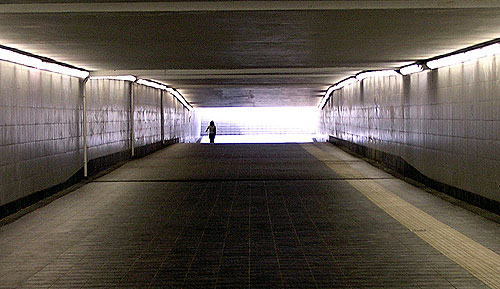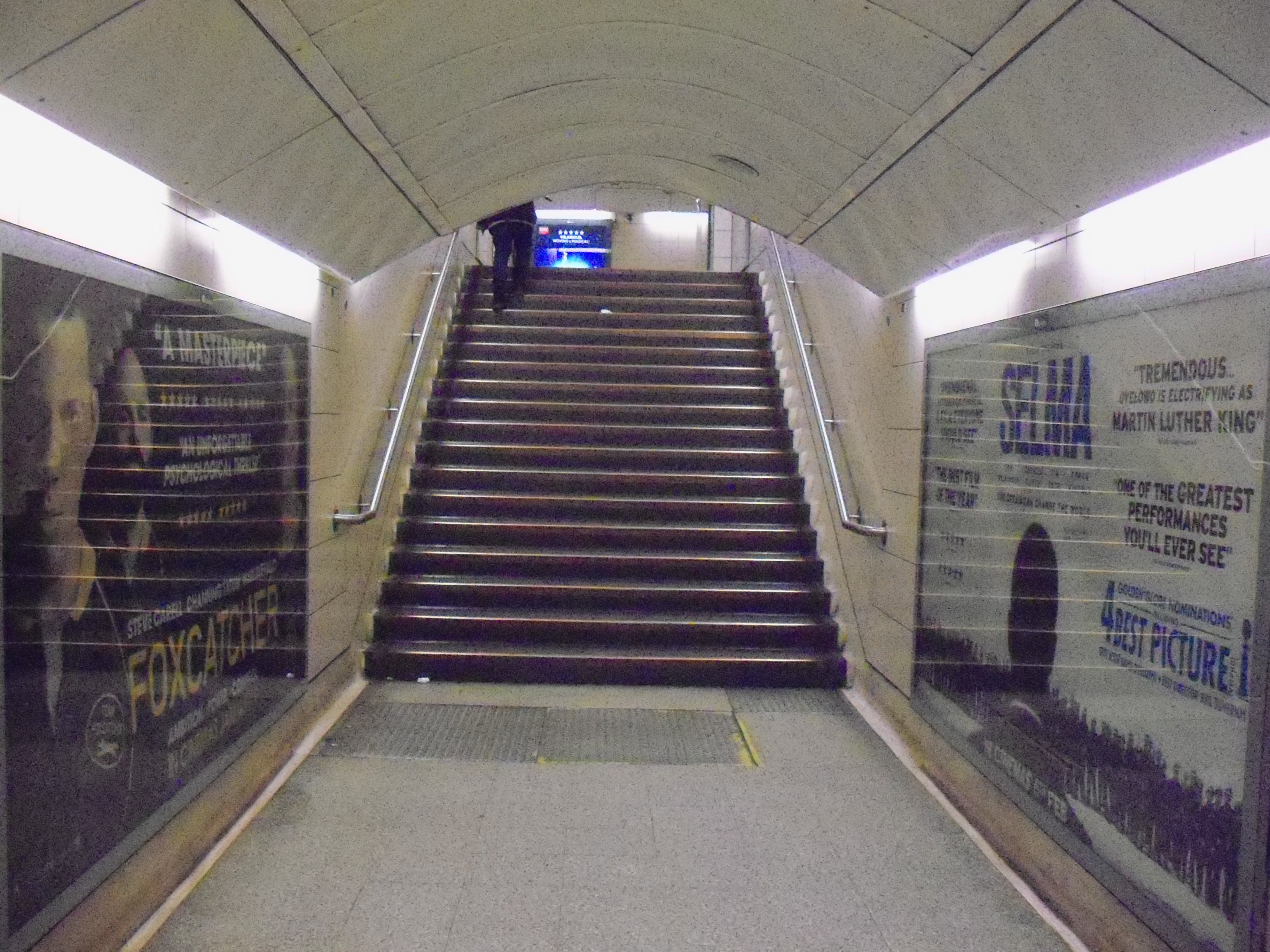Underpass construction
Contents |
[edit] Introduction
An underpass, or subway, is a tunnel containing a road or pedestrian passageway running underneath a road or railway. Underpasses can also be constructed to allow wildlife to pass safely under a transport corridor.
[edit] Construction methods
There are three main methods for constructing underpasses:
- Precast concrete units.
- In situ concrete.
- Thrust-bored units.
Precast concrete units are often manufactured as standard units and can be provided to site as complete box-like open-ended sections, portal frame segments, or as separate wall and roof units.
Box units are typically jointed using a pre-formed sealant strip in a socket and spigot joint. Connection plates in the floor and roof are used to bolt together the units.
Portal frame units, which are pre-stressed, require the lower waterproofing membrane to be placed on a concrete slab, with continuous concrete bearing pads (usually 300 mm wide x 25 mm deep) are laid on top. The units are then placed in position, with lubrication applied to reduce stress-induced friction.
Wall and roof unit systems comprise precast units that are placed in position with the floor laid in situ using the units as shuttering. The roof units are then placed and the in situ loading slab poured, with loading requirements determining the thickness.
Thrust-bored units require a suspension of bentonite as lubrication. As a means of transmitting the thrust load, the units must have direct edge contact rather than the pre-formed sealing strip. This jointing method should allow edge contact for jacking, but be capable of receiving a sealing compound from the inner face. This is possible by forming a rebated joint filled with mortar prior to applying the sealant.
In situ concrete underpasses are constructed using the same methods as any underground tunneling construction.
[edit] Waterproofing
Waterproofing underpasses is commonly achieved by applying one of the following:
Two coats of mastic asphalt should be laid, with joints staggered at least 150 mm. Bituminous sheeting should be applied in 2-3 layers, with hot bitumen fully bedding each layer. A self-adhesive bituminous polythene can be used and have the advantage of being easier and quicker to lie in place.
Once in place, the waterproof membrane must be protected by constructing a concrete-block skin against the membrane before backfilling with granular material. This helps to avoid the membrane being punctured.
[edit] Lighting and drainage
To try and avoid vandalism occurring, underpass lighting should be made using toughened glass and recessed into the walls or roof units.
The locality and use of the underpass will determine the finishes. Urban underpasses are often painted in bright colours or to suit the finish of its immediate surroundings, using mosaics, tiling and rendering. For underpasses where aesthetics are not as important, a plain concrete finish will often be chosen.
Drainage comprises normal falls, screeded floor and gullies or continuous side channels which will flow into a storm sewer as and when required.
[edit] Find out more
[edit] Related articles on Designing Buildings Wiki
Featured articles and news
Editor's broadbrush view on forms of electrical heating in context.
The pace of heating change; BSRIA market intelligence
Electric Dreams, Boiler Realities.
New President of ECA announced
Ruth Devine MBE becomes the 112th President of the Electrical Contractors Association.
New CIAT Professional Standards Competency Framework
Supercedes the 2019 Professional Standards Framework from 1 May 2025.
Difficult Sites: Architecture Against the Odds
Free exhibition at the RIBA Architecture Gallery until 31 May.
PPN 021: Payment Spot Checks in Public Sub-Contracts
Published following consultation and influence from ECA.
Designing Buildings reaches 20,000 articles
We take a look back at some of the stranger contributions.
Lessons learned from other industries.
The Buildings of the Malting Industry. Book review.
Conserving places with climate resilience in mind.
Combating burnout.
The 5 elements of seiri, seiton, seiso, seiketsu and shitsuke.
Shading for housing, a design guide
A look back at embedding a new culture of shading.
The Architectural Technology Awards
The AT Awards 2025 are open for entries!
ECA Blueprint for Electrification
The 'mosaic of interconnected challenges' and how to deliver the UK’s Transition to Clean Power.
Grenfell Tower Principal Contractor Award notice
Tower repair and maintenance contractor announced as demolition contractor.
























